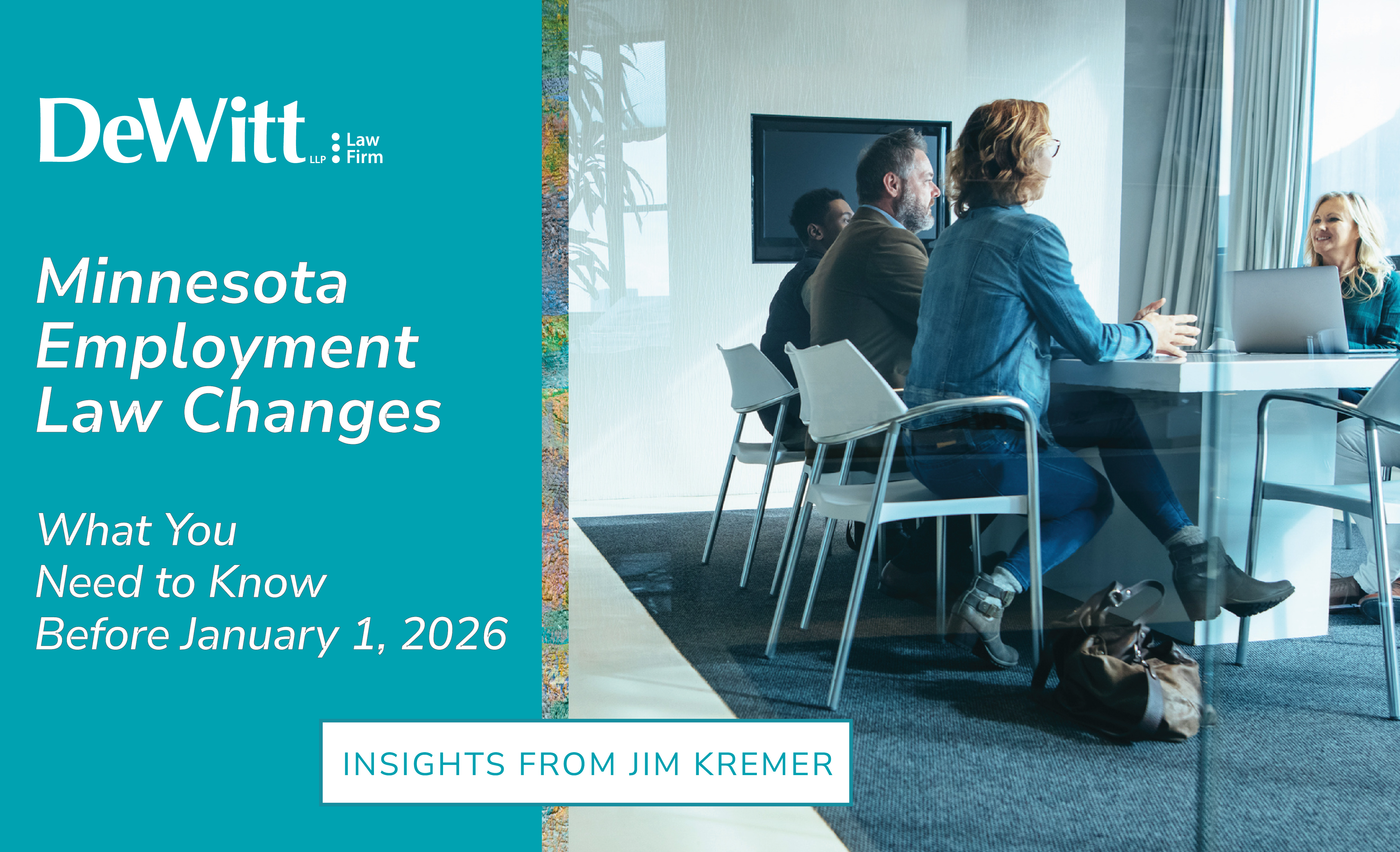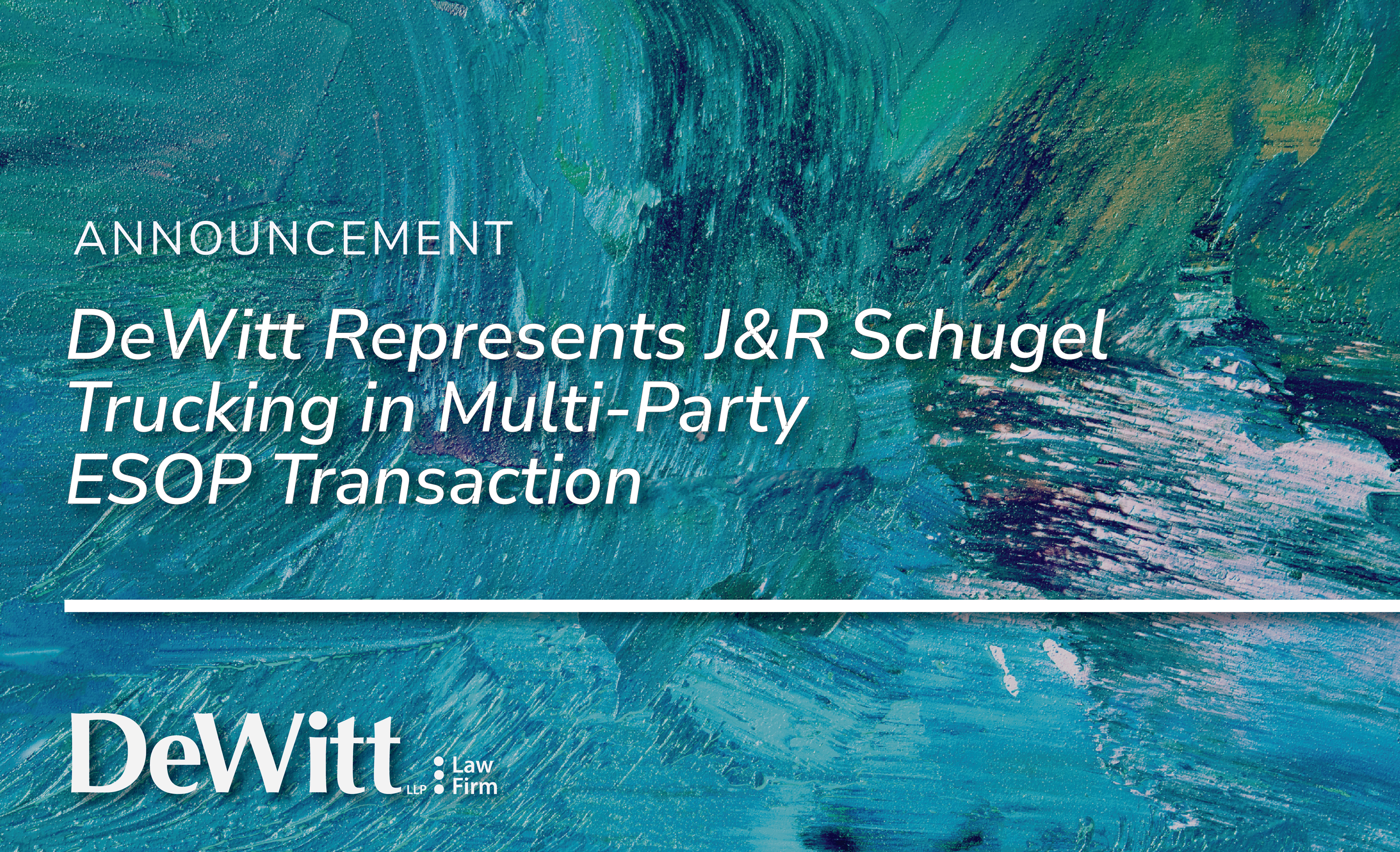
News
-
DeWitt LLP law firm announced today that it represented J&R Schugel Trucking, Inc. (JRS) of New Ulm, Minnesota, in its October 31, 2025, acquisition by Interstate Personal Services, Inc. (IPS). The transaction involved two employee stock ownership (ESOP) entities, as well as JRS and its affiliated equipment leasing and freight brokerage entities. Over the course of approximately five months, a multi-disciplinary DeWitt deal team, including members from its ESOP, transportation and logistics, employment, and corporate practice groups, guided JRS through a complex, multi-million dollar transaction structured as a share exchange. Read More About DeWitt Represents J&R Schugel Trucking in Multi-Party ESOP Transaction
-

-
 DeWitt LLP is proud to announce that Tim Stewart, President and Managing Partner, has been selected to the 2025 BizTimes Wisconsin 275, an annual recognition honoring the 275 most influential business leaders shaping Wisconsin’s economy. Read More About DeWitt President & Managing Partner Tim Stewart Named to BizTimes Wisconsin 275
DeWitt LLP is proud to announce that Tim Stewart, President and Managing Partner, has been selected to the 2025 BizTimes Wisconsin 275, an annual recognition honoring the 275 most influential business leaders shaping Wisconsin’s economy. Read More About DeWitt President & Managing Partner Tim Stewart Named to BizTimes Wisconsin 275 -
DeWitt LLP is proud to announce that three of our attorneys have been named 2025 Wisconsin Law Journal Legal All-Stars—an honor reserved for outstanding legal professionals who demonstrate exceptional skill, leadership, and service to the profession. Read More About DeWitt Attorneys Honored as 2025 Wisconsin Law Journal Legal All-Stars
-
 Big congrats are in order! We are excited to share that eleven DeWitt attorneys in Wisconsin have just been named to the 2025 Super Lawyers and Wisconsin Rising Stars lists. This is a tremendous honor and a well-deserved spotlight on the talent, dedication, and results our team brings to clients every day. Read More About DeWitt Celebrates Eleven Attorneys Selected as 2025 Wisconsin Super Lawyers and Rising Stars
Big congrats are in order! We are excited to share that eleven DeWitt attorneys in Wisconsin have just been named to the 2025 Super Lawyers and Wisconsin Rising Stars lists. This is a tremendous honor and a well-deserved spotlight on the talent, dedication, and results our team brings to clients every day. Read More About DeWitt Celebrates Eleven Attorneys Selected as 2025 Wisconsin Super Lawyers and Rising Stars






